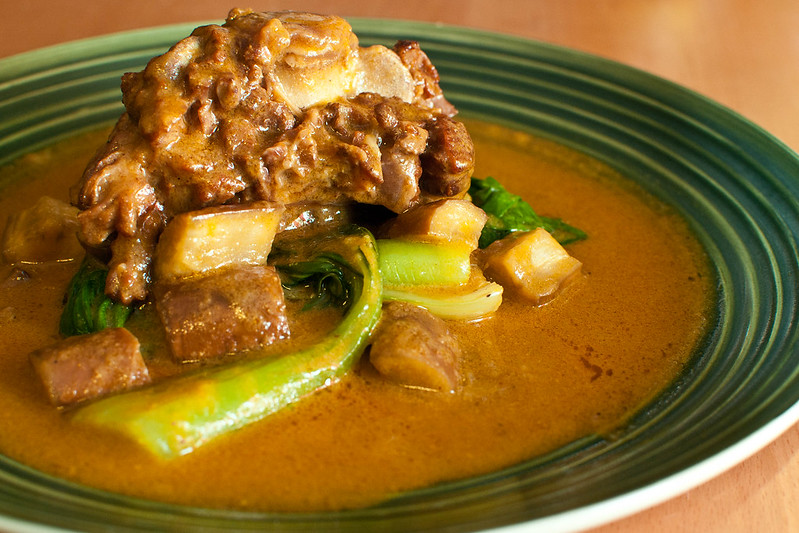If you’ve travelled to Asia, there’s a high chance you’ve seen or visited a ‘wet market’. If you’ve travelled to Asia and have no clue what I’m talking about, you’ve missed out on half the trip and a good chunk of the full experience.
For the uninitiated, a wet market, as the name suggests, is a fresh food market selling meat, fish and produce in a loud, dense, open-air building. Stalls are aligned side by side, usually only a metre apart, which makes for a slightly tense and largely awkward shopping experience, should you choose to betray your usual merchant.
The ‘wet’ part, I suspect, comes from the puddles of mud and pools of water you must carefully maneuver through as you weave between yelling vendors and bartering customers.
Produce from wet markets are also cheap, especially if you buy before dawn or are willing to haggle with cleaver-wielding butchers. While I’m relieved that I no longer have to take my chances when shopping, I miss the variety of obscure cuts and unusual meats that were available. Thankfully, many local butchers do stock offal and curious meat cuts (usually stored in secret, just ask!).
I double dare you to summon your inner Heston Blumenthal and swap you bog standard Sunday roast for kare-kare, a Filipino peanut stew made with beef tripe and oxtail. Bear in mind these cuts do take a longer time to soften, so it’s best to make it on a day you’ve got time to spare, which is why Sunday is usually perfect for most.
But who are we kidding? It’s lockdown. Of course, you have time.
Recipe courtesy of my mama, Eleonor, who never measured her ingredients but somehow always got it right. I measured it for her, so now you will too.
Serves: 4
Cooking time: 2-3 hours
Ingredients:
▪ 500g beef tripe
▪ 500g oxtail (or osso bucco)
▪ 1 beef bouillon cube
▪ 2 tblsp rice flour, toasted
▪ 250g snake beans, cut into 10 cm lengths
▪ 300g eggplant, cut into 3 cm thick wedges
▪ 200g bokchoy, leaves separated
▪ 150g banana blossoms, finely sliced
▪ 8 garlic cloves, minced
▪ 1 medium sized onion, diced
▪ 2 tblsp cooking oil
▪ 2 cups rice water
▪ 375g unrefined peanut butter
▪ 125 mL coconut milk
▪ 1 tblsp annatto seeds (or saffron threads/powder), soaked in 2 tblsp hot water
▪ Jasmine rice and shrimp paste (belacan) to serve
Method:
- Toast the rice flour in a pan for 5 minutes or so until fragrant and slightly browned. Set aside.
- Make steamed rice (See: Rice recycled thrice: a broke student’s guide to leftovers | GRAM Magazine) but reserve 2 cups of the rice water (from the second rinse) for later use
- Cut the beef tripe into 5cm squares and parboil in salted water for 30 minutes over high heat or until a toothpick can be inserted with little effort. Strain and set aside.
- Boil the oxtail in a separate pot for 30 minutes over high heat or until slightly tender. Reserve the stock.
- In a heavy-bottomed pot, sauté the garlic and onions in cooking oil over medium heat until fragrant. Add the oxtail and beef tripe and stir until coated with the aromatics.
- Add the reserved oxtail stock, bouillon cube and rice water. Cover with a lid and boil for 20-30 minutes on high heat, skimming the foam occasionally.
- Thin out the peanut butter in a bowl using some of the hot stock and stir back into the mixture.
- Add the eggplants, snake beans and banana blossoms to the pot and simmer on low heat for 10-15 minutes or until the eggplant is tender.
- Add the toasted rice flour, one tablespoon at a time, until the desired thickness is achieved. Strain the annatto seeds and add the steeped liquid into the mix.
- Turn off the heat and add the bokchoy and coconut milk. Salt is not traditionally added to the stew, and shrimp paste is added individually to taste. Serve on a bed of hot jasmine rice.

